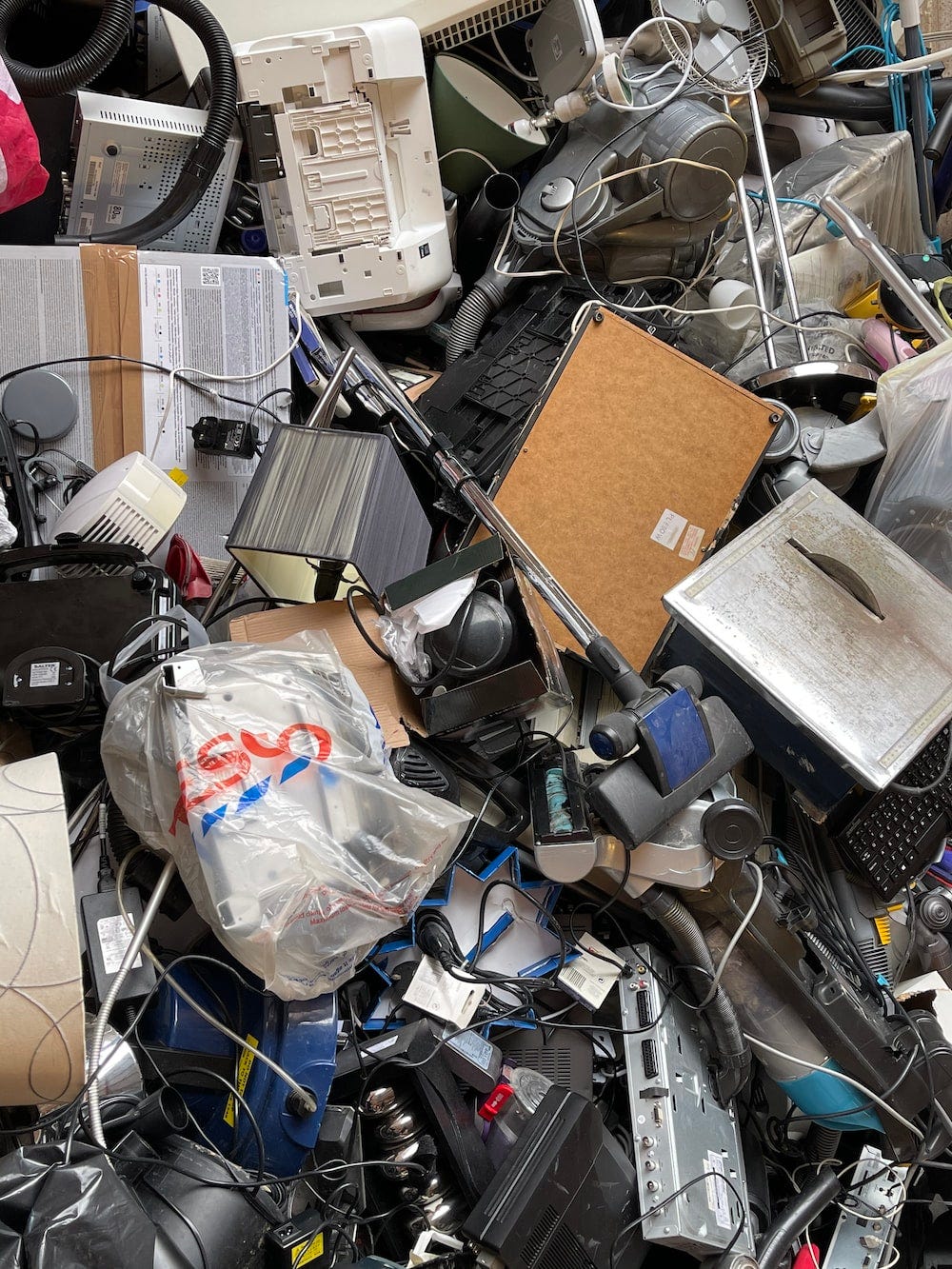e-Waste
e-waste leads to e -Pollution

Hey! Have you seen the new brand phone, with new advanced features, come into the market?
Oh great! But recently I got a new phone on my birthday.
It is OK! But you can also buy this brand-new phone.
Not a big deal ………
Wait! Wait! Wait
Read it ......
" As the pace of technology increases, the amount of toxic electronic waste is pilling up at home and abroad " -Gene Green
Have you heard about e-waste?
e-Waste
E-waste known as Electronic waste includes electronic components like computers, televisions, computers, VCRS, Laptops, Printers, video screens, air conditioners, and any types of home appliance that are currently not in our use and dumped on the land it further creates and causes different types of pollution that are not fit for human health and of course even not good for our environment also.
This type of e-waste creates a problem for our environment because, during the decomposition process of this waste, they produces various harmful and toxic chemicals that are not fit for our environment.
The list of Toxic chemicals present in e-waste is as follows:
- Lead (Pb)
- Cadmium ( Cd)
- Mercury ( Hg)
- Nickle(Ni)
- Chlorofluorocarbons ( CFCs)
- Barium (Ba)
- Lithium (Li)
- Polybrominated diphenyl ethers (PBDEs)
- Polycyclic Aromatic Hydrocarbons ( PAHs)
- Polychlorinated dibenzo-p-dioxins and Furans ( PCDD/Fs) etc.
The harmful impacts of e-waste on Human health are :
- e-waste exposure causes various health effects during pregnancy and infants and children:
- Reduced lung and respiratory function in infants
- Causes of increased risk of asthma
- Adverse neonatal outcomes
- Premature birth
- May contaminate breastmilk
- Increased the rate of stillbirth
- It shows a toxic Impact on the Central Nervous System (CNS)
2. It shows harmful health effects in humans like -damage to the brain, heart, liver, kidney, and bones.
3. Bad Impacts on the Reproductive System
4. It results in various respiratory disease
5. Causes other types of diseases like cancer and many more.
e-Waste Shows Harmful Impacts on Our Environment :
- It is the main cause of air pollution
- Contaminates the water
- Causes soil and land pollution
- Increases the acidification and toxification levels in groundwater
- Marine life should be disturb
- Shows a harmful impact on biodiversity and the ecosystem
- Wildlife is also affected by e-waste.
Preventive measures
- By using the 4Rs process- Recycled, Refurbished, Resold, and Reused
- By adopting and enforcing high-level international agreements
- Proper monitoring of e-waste sites
- By developing and further implementing national e-waste management legislation
- Educate workers, people, and youth about e-waste-related health issues.
Always Remember
References
htttps://earthday.org
https://elytus.com
who. int
Comments
Post a Comment
Please do not enter any spam link in the comment box.